-
 Bitcoin
Bitcoin $118800
-0.14% -
 Ethereum
Ethereum $4215
-0.42% -
 XRP
XRP $3.137
-1.39% -
 Tether USDt
Tether USDt $1.000
0.01% -
 BNB
BNB $801.4
-0.34% -
 Solana
Solana $174.5
-4.67% -
 USDC
USDC $0.0000
0.01% -
 Dogecoin
Dogecoin $0.2227
-4.63% -
 TRON
TRON $0.3437
1.55% -
 Cardano
Cardano $0.7720
-3.53% -
 Hyperliquid
Hyperliquid $43.12
-4.42% -
 Chainlink
Chainlink $21.09
-4.78% -
 Stellar
Stellar $0.4308
-2.98% -
 Sui
Sui $3.650
-5.39% -
 Bitcoin Cash
Bitcoin Cash $576.9
1.28% -
 Hedera
Hedera $0.2456
-4.71% -
 Ethena USDe
Ethena USDe $1.001
-0.02% -
 Avalanche
Avalanche $22.80
-4.05% -
 Litecoin
Litecoin $120.3
-2.70% -
 Toncoin
Toncoin $3.378
1.24% -
 UNUS SED LEO
UNUS SED LEO $8.975
-1.00% -
 Shiba Inu
Shiba Inu $0.00001289
-4.88% -
 Uniswap
Uniswap $10.95
0.54% -
 Polkadot
Polkadot $3.851
-4.86% -
 Cronos
Cronos $0.1661
2.05% -
 Dai
Dai $1.000
0.02% -
 Ethena
Ethena $0.7820
-0.17% -
 Bitget Token
Bitget Token $4.391
-1.26% -
 Monero
Monero $270.3
0.77% -
 Pepe
Pepe $0.00001120
-6.72%
What are payment channels?
Payment channels enable fast, low-cost blockchain transactions by settling final balances off-chain, using cryptography and smart contracts for security.
Aug 12, 2025 at 03:01 am
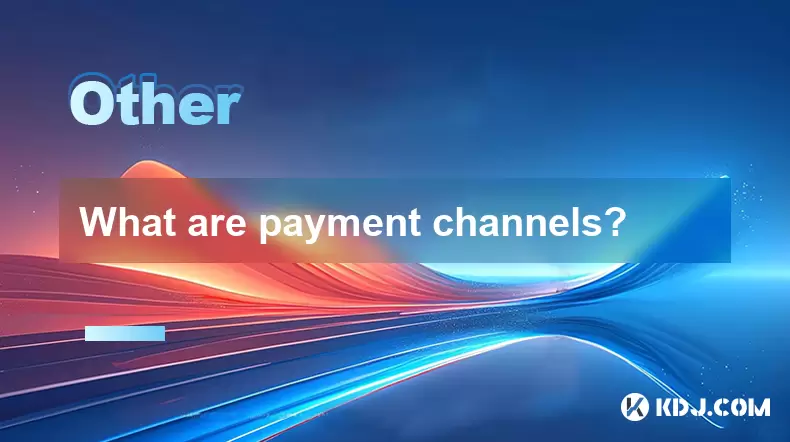
Understanding the Basics of Payment Channels
Payment channels are a layer-2 scaling solution designed to enable fast, low-cost transactions in blockchain networks, particularly in cryptocurrencies like Bitcoin and Ethereum. Instead of recording every transaction on the blockchain, payment channels allow two parties to conduct multiple off-chain transactions while only settling the final state on-chain. This reduces network congestion and lowers transaction fees. The fundamental idea is to open a channel by locking funds in a multi-signature wallet controlled by both participants. Once opened, they can exchange signed transaction updates that reflect their current balance without broadcasting them to the network.
The concept relies heavily on cryptographic signatures and time-locked smart contracts to ensure security and fairness. Each transaction update must be signed by both parties to be valid, and the most recent state overrides previous ones. If one party attempts to cheat by broadcasting an outdated balance, the other can challenge it within a defined timeframe using a penalty mechanism. This makes the system trustless and secure, even when participants do not fully trust each other.
How Payment Channels Work Step-by-Step
To initiate a payment channel, users must follow a series of precise steps:
- Both parties generate a multi-signature address that requires both private keys to spend funds.
- They create and sign a funding transaction that deposits a certain amount of cryptocurrency into the channel, which is then broadcast to the blockchain.
- After confirmation, they exchange commitment transactions, which represent the current distribution of funds within the channel.
- Each new payment involves creating a new pair of commitment transactions, revoking the previous ones through revocation keys or preimages.
- When ready to close, either party broadcasts the latest commitment transaction, and after a challenge period, the final balances are settled on-chain.
This process ensures that only two transactions—opening and closing—are recorded on the blockchain, regardless of how many transfers occur off-chain. The use of Hashed Time-Lock Contracts (HTLCs) enables conditional payments, which are essential for routing through multiple channels in networks like the Lightning Network.
Types of Payment Channels
There are several variations of payment channels, each suited to different use cases:
- Unidirectional channels allow payments in only one direction, typically used for streaming payments from a sender to a receiver. These are simpler to implement but less flexible.
- Bidirectional channels support two-way transactions, enabling both parties to send and receive funds repeatedly. This is the most common type used in modern implementations like the Lightning Network.
- State channels extend the concept beyond payments to general smart contract interactions, allowing off-chain execution of complex operations with on-chain finality.
- Spill-over channels automatically route excess funds into new channels when capacity is reached, improving liquidity management.
Each type uses smart contracts or script-based logic tailored to its functionality, ensuring that funds remain secure even during extended off-chain interactions.
Building a Payment Channel on the Lightning Network
Creating a payment channel on the Lightning Network involves specific tools and commands. Below is a detailed guide using c-lightning, a popular implementation:
- Install c-lightning and ensure bitcoind is running in regtest or mainnet mode.
- Generate a wallet using
lightningd --daemonand confirm it’s synchronized with the blockchain. - Use the
fundchannelcommand with a node’s public key and desired satoshi amount:lightning-cli fundchannel. - Confirm the funding transaction is broadcast by checking the mempool or using
listfunds. - Once confirmed, the channel becomes active and can be used to send or receive payments via
payorinvoicecommands.
For receiving payments, generate an invoice using:lightning-cli invoice .
To send, use:lightning-cli pay .
Monitoring channel status is done with listpeers and listchannels, which show balance, state, and routing capacity.
Security Mechanisms in Payment Channels
Security in payment channels is maintained through several cryptographic and economic incentives:
- Revocable Sequence Maturity Contracts (RSMC) ensure that outdated states cannot be used to steal funds. Each old commitment transaction becomes spendable by the counterparty if broadcast, acting as a punishment for cheating.
- Hash Time-Locked Contracts (HTLCs) enable trustless routing across multiple channels by requiring preimage revelation within a time window.
- Watchtowers are third-party services that monitor the blockchain for fraudulent broadcasts and automatically submit penalty transactions on behalf of users who are offline.
- Breach remedy transactions are pre-signed by both parties during channel updates, allowing immediate retaliation if one tries to settle an old state.
These mechanisms collectively ensure that even if one participant acts maliciously, they face financial loss, making honest behavior the optimal strategy.
Common Challenges and Limitations
Despite their advantages, payment channels have inherent limitations:
- Liquidity constraints require users to lock funds upfront, limiting the amount they can transact.
- Channel imbalance occurs when one party exhausts their outbound capacity, preventing further payments in that direction.
- On-chain dependency means opening and closing channels still require blockchain interaction, exposing users to network fees and delays.
- Complexity in routing increases with network size, requiring efficient pathfinding algorithms and up-to-date channel state information.
Users must actively manage their channels, including rebalancing via circular payments or using splicing techniques to add or remove funds without closing.
Frequently Asked Questions
What happens if my internet connection drops while a payment channel is open?
If you go offline, your node cannot respond to a malicious attempt to broadcast an old state. However, watchtowers can monitor the blockchain on your behalf and submit a penalty transaction if fraud is detected. It’s recommended to use a reliable watchtower service or maintain high uptime.
Can I close a payment channel unilaterally?
Yes, either party can initiate a unilateral close by broadcasting the latest commitment transaction they possess. The funds will be locked for a predefined period (via to_self_delay) before becoming spendable, allowing the other party to contest if an outdated state was used.
How do I know if a payment channel has sufficient capacity to receive funds?
Use the listchannels command in your node software to view the spendable and receivable amounts. The remote_balance field indicates how much the counterparty can send to you. You can also request an invoice from the recipient to verify their incoming capacity.
Is it possible to route payments through multiple payment channels?
Yes, the Lightning Network uses multi-hop routing where payments traverse several channels. This requires each intermediate node to support HTLCs and have sufficient liquidity. Routing is handled automatically by the node using algorithms like source routing or LSP-assisted routing.
Disclaimer:info@kdj.com
The information provided is not trading advice. kdj.com does not assume any responsibility for any investments made based on the information provided in this article. Cryptocurrencies are highly volatile and it is highly recommended that you invest with caution after thorough research!
If you believe that the content used on this website infringes your copyright, please contact us immediately (info@kdj.com) and we will delete it promptly.
- Dogecoin, Meme Coins, and Whale Buys: What's the Hype?
- 2025-08-12 06:50:12
- Bitcoin, Ethereum, and the Pump-and-Dump Merry-Go-Round: A New Yorker's Take
- 2025-08-12 07:10:12
- MAGACOIN Mania: Why Holders Are Staking Their Claim in This Bull Season
- 2025-08-12 06:30:13
- Heritage Distilling's Bold Bet: A $360M IP Treasury Powered by Story Protocol
- 2025-08-12 06:30:13
- LayerZero, Stargate Bridge, and the Token Deal That Wasn't: What Happened?
- 2025-08-12 07:10:12
- Floki Price Prediction & Technical Analysis: Navigating the Viking Dog Coin
- 2025-08-12 07:15:17
Related knowledge

How can zero-knowledge proofs enhance privacy on a blockchain?
Aug 12,2025 at 02:15am
Understanding Zero-Knowledge Proofs in Blockchain ContextZero-knowledge proofs (ZKPs) are cryptographic protocols that allow one party (the prover) to...
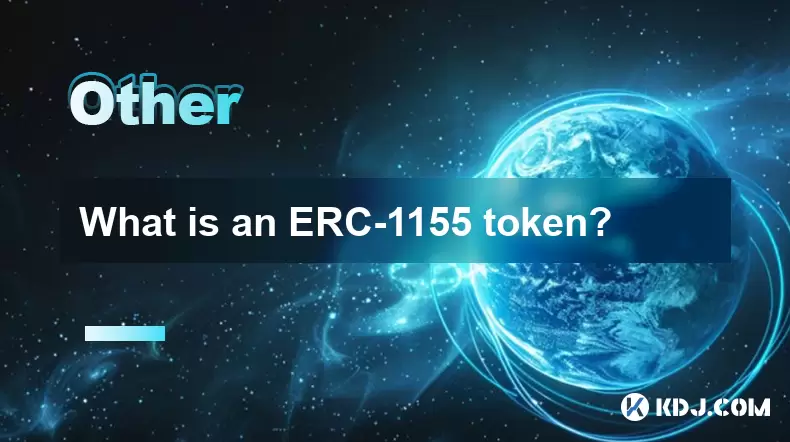
What is an ERC-1155 token?
Aug 12,2025 at 05:21am
Understanding the ERC-1155 Token StandardThe ERC-1155 token standard is a multi-token standard introduced on the Ethereum blockchain that enables the ...
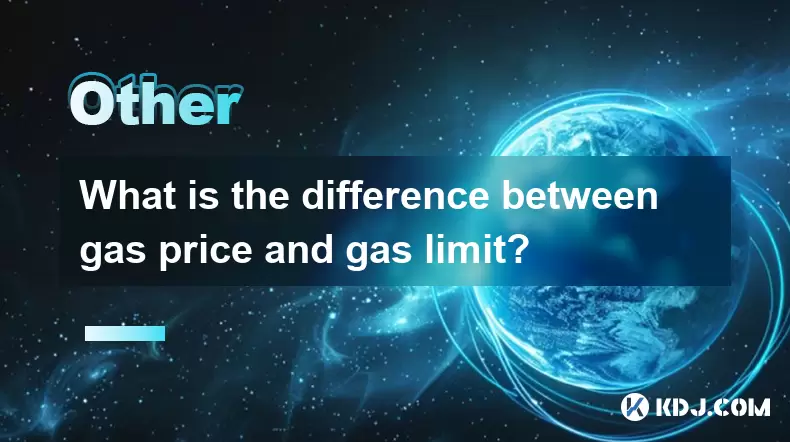
What is the difference between gas price and gas limit?
Aug 09,2025 at 08:42pm
Understanding Gas in Ethereum and EVM-Based NetworksIn blockchain networks that support smart contracts—particularly Ethereum and other EVM (Ethereum ...
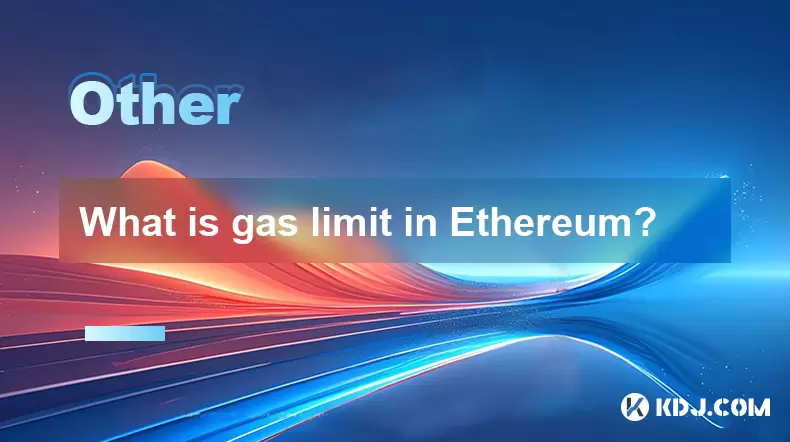
What is gas limit in Ethereum?
Aug 11,2025 at 04:29am
Understanding the Concept of Gas in EthereumIn the Ethereum network, gas is a unit that measures the computational effort required to execute operatio...
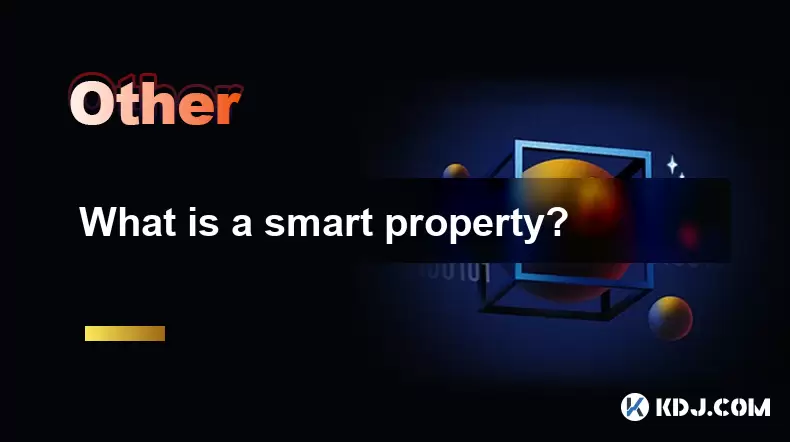
What is a smart property?
Aug 12,2025 at 05:14am
Understanding Smart Property in the Cryptocurrency EcosystemSmart property refers to physical or digital assets whose ownership and transfer are manag...

What is a "mempool"?
Aug 11,2025 at 02:49am
Understanding the Mempool in Cryptocurrency NetworksThe mempool, short for memory pool, is a critical component of blockchain networks like Bitcoin an...

How can zero-knowledge proofs enhance privacy on a blockchain?
Aug 12,2025 at 02:15am
Understanding Zero-Knowledge Proofs in Blockchain ContextZero-knowledge proofs (ZKPs) are cryptographic protocols that allow one party (the prover) to...

What is an ERC-1155 token?
Aug 12,2025 at 05:21am
Understanding the ERC-1155 Token StandardThe ERC-1155 token standard is a multi-token standard introduced on the Ethereum blockchain that enables the ...

What is the difference between gas price and gas limit?
Aug 09,2025 at 08:42pm
Understanding Gas in Ethereum and EVM-Based NetworksIn blockchain networks that support smart contracts—particularly Ethereum and other EVM (Ethereum ...

What is gas limit in Ethereum?
Aug 11,2025 at 04:29am
Understanding the Concept of Gas in EthereumIn the Ethereum network, gas is a unit that measures the computational effort required to execute operatio...

What is a smart property?
Aug 12,2025 at 05:14am
Understanding Smart Property in the Cryptocurrency EcosystemSmart property refers to physical or digital assets whose ownership and transfer are manag...

What is a "mempool"?
Aug 11,2025 at 02:49am
Understanding the Mempool in Cryptocurrency NetworksThe mempool, short for memory pool, is a critical component of blockchain networks like Bitcoin an...
See all articles

























































































